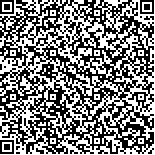|

二维码(扫一下试试看!) |
| A Particle Size Analysis Method for Paper Filler Based on Computer Vision |
| Received:May 03, 2019 |
| DOI:10.11980/j.issn.0254-508X.2019.08.008 |
| Key Words:paper filler particle size analysis computer vision connected component Euler number |
| Fund Project:国家自然科学基金资助 61603234 61471227 61601271国家自然科学基金资助(项目编号:61603234,61471227,61601271)。 |
| Author Name | Affiliation | Postcode | | YAO Bin | School of Electronic Information and Artificial Intelligence, Shaanxi University of Science and Technology, Xi’an, Shaanxi Province, 710021 | 710021 | | HE Lifeng | School of Electronic Information and Artificial Intelligence, Shaanxi University of Science and Technology, Xi’an, Shaanxi Province, 710021
Faculty of Information Science and Technology, Aichi Prefectural University, Aichi, Japan, 480-1198 | | | KANG Shiying | School of Computer Science, Xianyang Normal University, Xianyang, Shaanxi Province,712000)
(* | | | ZHAO Xiao | School of Electronic Information and Artificial Intelligence, Shaanxi University of Science and Technology, Xi’an, Shaanxi Province, 710021 | 710021 |
|
| Hits: 5273 |
| Download times: 3606 |
| Abstract:Aiming at the existing disadvantages of laser diffraction method used in particle size analysis of paper filler, a method for particle size analyzing of paper fillers based on computer vision was proposed. Firstly, the SEM images were preprocessed to remove noise and other factors affecting the statistics of particle size. Then, an improved watershed algorithm was used to segment the image. The particle size distribution of paper filler particles was determined by fast connected component labeling and Euler number algorithm. Finally, the result of particle size distribution from computer vision method was compared with those obtained by laser diffraction method. Experimental results of PCC paper filler images magnified 1500 times demonstrated that the particle size distribution of paper filler based on computer vision method was basically consistent with that measured by laser diffraction method with an error ratio less than 1% on median diameter. Moreover, the error ratio was about 6% when the cumulative particle size distribution reaches 85%. |
| View Full Text HTML View/Add Comment Download reader |
|
|
|